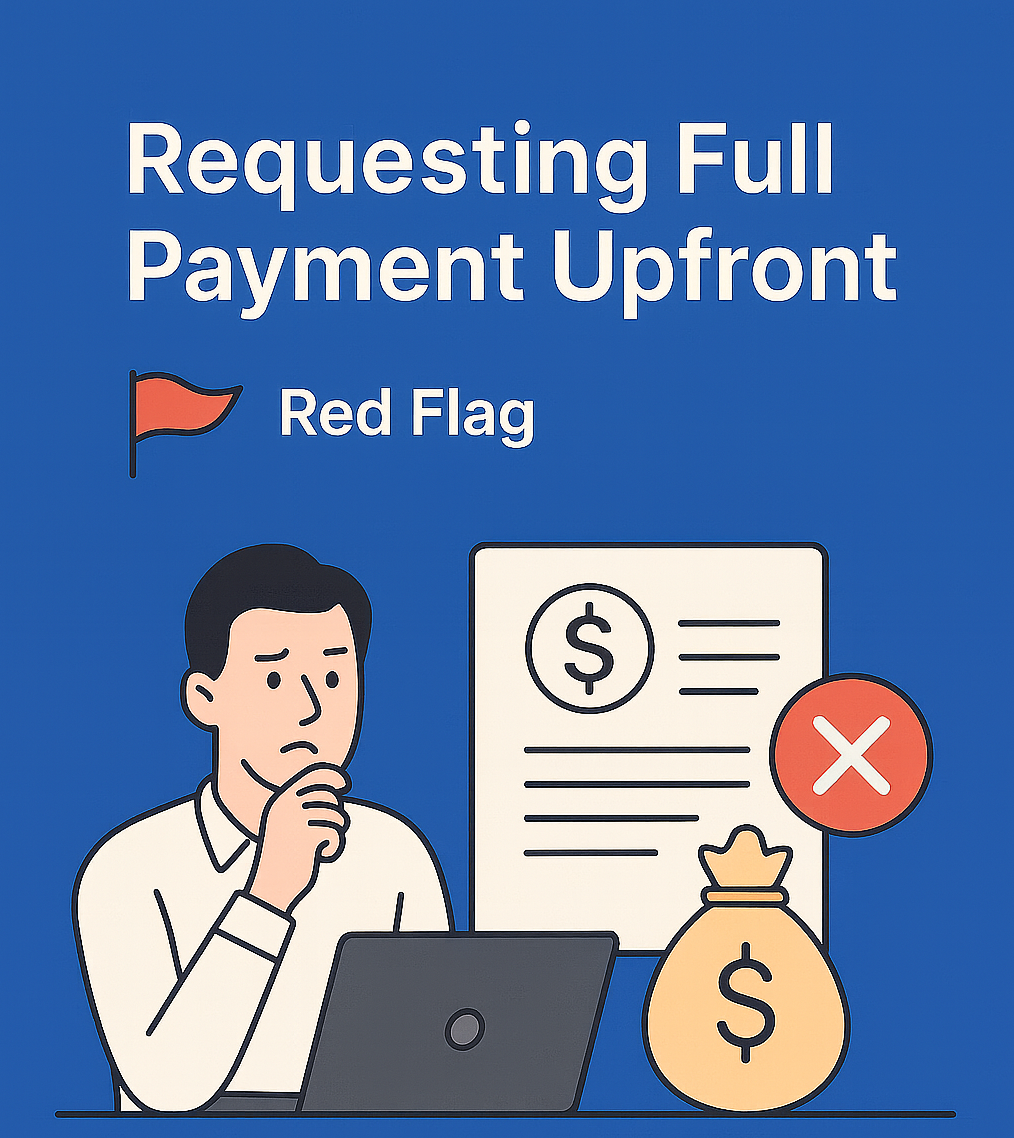Freelance Scams and Fake Prints: How to Spot Red Flags Before It’s Too Late
In the world of freelancing, trust is currency. But what happens when trust is abused? From fake portfolios and cloned designs to "too good to be true" offers, freelance scams are more common than ever.
This guide will help you recognize red flags early, protect your project, and make safer hiring decisions—especially if you're new to hiring remote talent.
1. Fake Portfolios and Stolen Prints
• What It Looks Like
Some freelancers present visually stunning portfolios… that aren’t theirs. They may download prints, UI designs, or code snippets from Dribbble, GitHub, or Behance and claim it as their own.
• Red Flags
- No case studies or explanation behind the work
- All designs look inconsistent in style
- No live links or source repos
- Watermarked images or portfolio with no context
• How to Verify
- Ask for a Loom video walkthrough of their process
- Request the original Figma, Sketch, or repo link
- Ask “What was your role in this project?”
2. Unrealistic Promises
• Red Flags
- “We can deliver your full platform in 10 days.”
- “We’ve built for Fortune 500s” with no evidence
- Constant name-dropping but no client testimonials
• What to Do
- Ask for detailed timelines and milestones
- Request client references or verified reviews
- Research their LinkedIn and company profile
3. Lack of Transparency or Communication
• Warning Signs
- Delays with no updates
- Repeating “we’re working on it” without proof
- Avoiding video calls or screen sharing
- Refusing to use project trackers

4. Requesting Full Payment Upfront
• Red Flag
Legit professionals usually work with escrow or milestone-based payments not 100% upfront.
• Safer Options
- Use platforms with payment protection
- Agree on partial payments after each deliverable
- Create a simple contract or NDA
5. They Avoid Showing the Code, Backend, or Logic
• The Trick
Some scammers build beautiful frontends with no logic underneath—no backend, no database, no APIs. It looks real… until you dig in.
• Ask for:
- Code repository access
- Postman docs or database schemas
- A live staging URL
6. Always in a Rush or Using Pressure
- “If you don’t decide today, we’ll move on.”
- “We have other clients waiting.”
Scammers often rush decisions to avoid scrutiny.
Conclusion: Trust, But Verify
In a remote world, trust must be earned. If you’re building something meaningful like a startup, product, or platform vet every freelancer thoroughly.
Don’t just be impressed by design. Ask questions. Ask for proof. And walk away if anything feels off.
Because in freelancing, what you don’t know can cost you everything.



